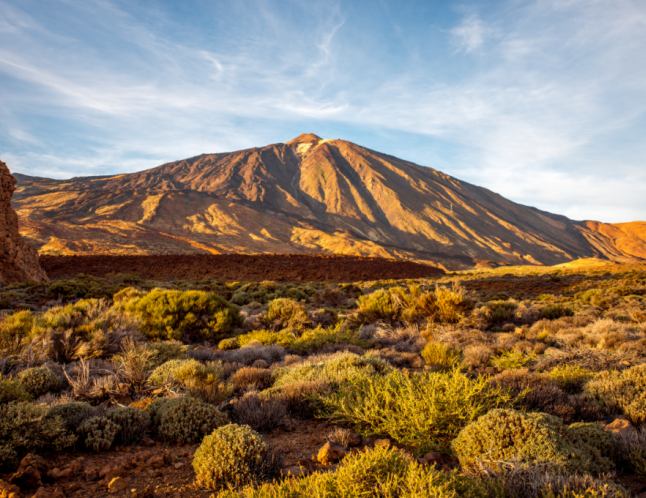I’m here to help you strike a balance between your love for the open road and the wonders of the wilderness. Understanding the importance of respecting wildlife should be your first checkpoint when planning an RV adventure. Sure, it’s about the thrill of seeing a deer graze nearby or hearing the calls of wild birds, but it’s also about protecting these natural moments for everyone to enjoy. Imagine driving to a National Park in your RV and staying for a few days and seeing wildlife like a beer or a deer, and getting to close and being injured or even killed.

That’s going to include recognizing the intersection of RV travel and natural habitats. Your mobile retreat is not just a vehicle; it becomes a part of the landscape it’s parked in. And here’s where things get serious: you’re a visitor in someone else’s home – the home of countless wild animals. It’s a responsibility not to be taken lightly.
Now, for the expertise slice. Trust me, E-E-A-T guidelines are what you want guiding you through this journey. You’re going to find authoritative and credible content that puts people, and wildlife, first. This isn’t just content that tells you what to do; it also deeply analyzes why these actions matter to our furry and feathered friends.
Bringing this to a practical point, I’ll be guiding you through each step of the way, with actionable advice that can be put into practice immediately. So why wait? Your next step into responsibly enjoying your RV in the company of nature is just around the corner. Let’s traverse into the heart of the matter with ’10 Essential Ways to Safely Coexist with Wildlife During Your RV Adventures’.

10 Essential Ways to Safely Coexist with Wildlife During Your RV Adventures
1Learn about the wildlife in the area you’re visiting. State park websites, conservation blogs, and even local wildlife agencies can be great sources of information. Knowing who you’re sharing the land with, which could be bears, raccoons, squirrels or any number of different types of wildlife will prepare you for your visit.
2.. Store your food in secure containers and keep them in your RV or a designated bear box if available. This isn’t just about protecting your sandwich; it’s also about keeping animals wild and also keeping you safe from hungry wildlife. If you feed the animal once it will return for another meal.
3.Dispose of all waste using the appropriate facilities or pack it out. Even items that seems harmless can attract wildlife to your campsite. Already, there’s a lot of opportunity in maintaining clean nature spots for everyone to enjoy.
4. Encountering wildlife, keep a safe distance. I’m talking about the kind of distance that allows for zoom lens photography, not selfies. This respects the animals’ space and keeps you out of danger.
5. Don’t feed the animals. It might seem harmless, but it changes their natural foraging habits and can lead to aggressive behavior. If the animal is fed by humans it will expect all it meals to be provided by humans.
6.Picking the right spot to set up camp can make all the difference. Look for areas that are not known to be animal walkways or nesting sites. A little research goes a long way here. Learning Stealth camping and blending into the wilderness not causing problems in the area your staying.
7. Areas with frequent wildlife visits, consider non-harmful solutions. This could be anything from high-pitched noise devices to simply keeping a tidy camp that doesn’t attract animals in the first place.
8.Know what to do if you do have an encounter that goes south. This includes understanding how to use bear spray, knowing when to play dead, or when to back away slowly. That’s the strategy I like to leverage for peace of mind. Do not be aggressive towards the animal it will think your trying to attack it and protect it self.
9.When you’re out and about, especially at dusk or dawn when animals are most active, stick together. Hiking or walking in groups is not only more enjoyable, but it also makes you less intriguing to a curious animal. Most animals are more afraid of you, so stay away from them if possible.
10. Keep learning about the animals you’re living amongst, and share what you’ve learned with your fellow RVers. It’s about learning to live with not only humans but also the wildlife your camping near. Don’t forget your in there territory not yours.
Leaving No Trace: Final Thoughts on Wildlife Conservation and RVing Ethics
You’ve now got 10 tips on how to deal with wildlife when RVing without disrupting our wonderful wildlife. Remember, it’s not just about having a good time; it’s also about preserving these natural outdoor spaces for future generations. It’s about being part of a group that values and protects nature.
Every choice you make, from where you park your RV to how you dispose of your waste, has a huge effect on the local ecosystem. By choosing to be educated and responsible, you’re contributing to the well-being of the animals you encounter and the beauty of the places you visit.

Don’t forget, wildlife conservation isn’t a solo act. It’s a group effort that involves teaching fellow RVers and promoting ethical practices. Share your knowledge, lead by example, and inspire those around you to also act as keepers of nature. Safe travels and happy RVing! This is how to deal with wildlife when RVing.
